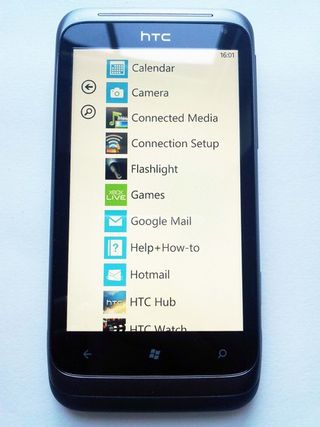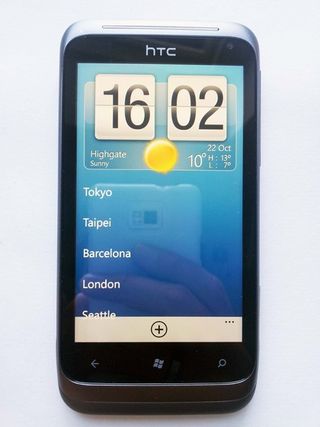Why you can trust TechRadar
Windows Phone is definitely gaining traction now that the likes of HTC, Samsung and Nokia are throwing their backing behind it, with the system powering the HTC Radar well. It's been a year since the first handset landed to much acclaim (replacing Windows Mobile at long last) but it still had some gaps that needed filling.
Windows Phone 7.5 Mango brought improvements such as multitasking to the party, but it's been the best part of 12 months before actual punters could get their hands on it, which was a source of major irritation for some. Microsoft has opened up 500 APIs to developers, but there's still a lot that needs doing here.
Remember that the key word when trying to comprehend Windows Phone 7.5 (if you've not used it yet) is "integration." Stick to that and you'll be fine. It really is a unique operating system, in that you have to throw out all previous experience of using apps such as Facebook on, say, an iPhone, and start again.

The various elements of that service and others are interwoven with the WP7 interface. It all becomes one. And after you get used to it, you realise just how slick and pleasant that feels.
The big thing about the HTC Radar's interface is tiles. The Today screen mantra is gone and replaced with a series of easy-to-press large square/rectangular tiles that display various bits of information. You can reorder them however you see fit or remove/replace them. The beauty is that they're 'live' so, in theory, they update with relevant information continuously, as it comes in.
We're big fans of the tile system. It's unique and different to anything we've seen before. But we do worry about the lack of customisation options. Android devices can be skinned so that you can pick up an HTC, Samsung, LG or other smartphone and they can look completely different. The only limit, really, is the manufacturer's imagination.

But Windows Phone can't be customised. Its major strength is also, in some ways, a weakness, because aside from changing the background from black to white and choosing one of a handful of preloaded colours for your tiles, there's very little you can do to make one Nokia smartphone look different from an HTC one or a Samsung WP7.5 device. Yes, you can change your tiles around and add shortcuts to this and that, but that's as far as it goes.
To be fair, Apple and BlackBerry are the same, but the main difference is that they have several devices made by the same manufacturer, so you'd expect them to look the same. Windows Phone 7.5 could be available on a multitude of manufacturers' devices, and the software is likely to look almost identical on all of them, which is a shame.
On the Radar, HTC can't skin anything. So the most it can offer is its own flagship wallpaper for the lock screen and an HTC Hub (basically an app), which includes things such as weather, stocks, news and favourites (things Windows manages itself elsewhere in the operating system). Having said that, it's unlikely to be something that irks your average buyer.
Apps are all stored in a vertical start menu, which is brought up when you click a little arrow on the screen. They're displayed in alphabetical order, and although there's a search function if you have gazillions, there's no way of creating folders, which is a bit of a pain. You can now shortcut directly to system functions via a tile (including turning Wi-Fi on or off without going through the whole menu), which we like.
Multitasking is present (something lacking on the original Windows Phone 7 handsets), but it's flaky, to say the least. You long-press the Back button and it gives you something akin to the cards system from WebOS. But it seems to have a mind of its own.
We fired up a few different apps and toggled between them. But the HTC Radar could never quite work out if it was freezing them in state like iOS does, keeping them going or closing them down completely, and there seemed to be no consistency. This could be because developers need to update their apps, but they've had plenty of time, considering we were reviewing Mango back in July.

